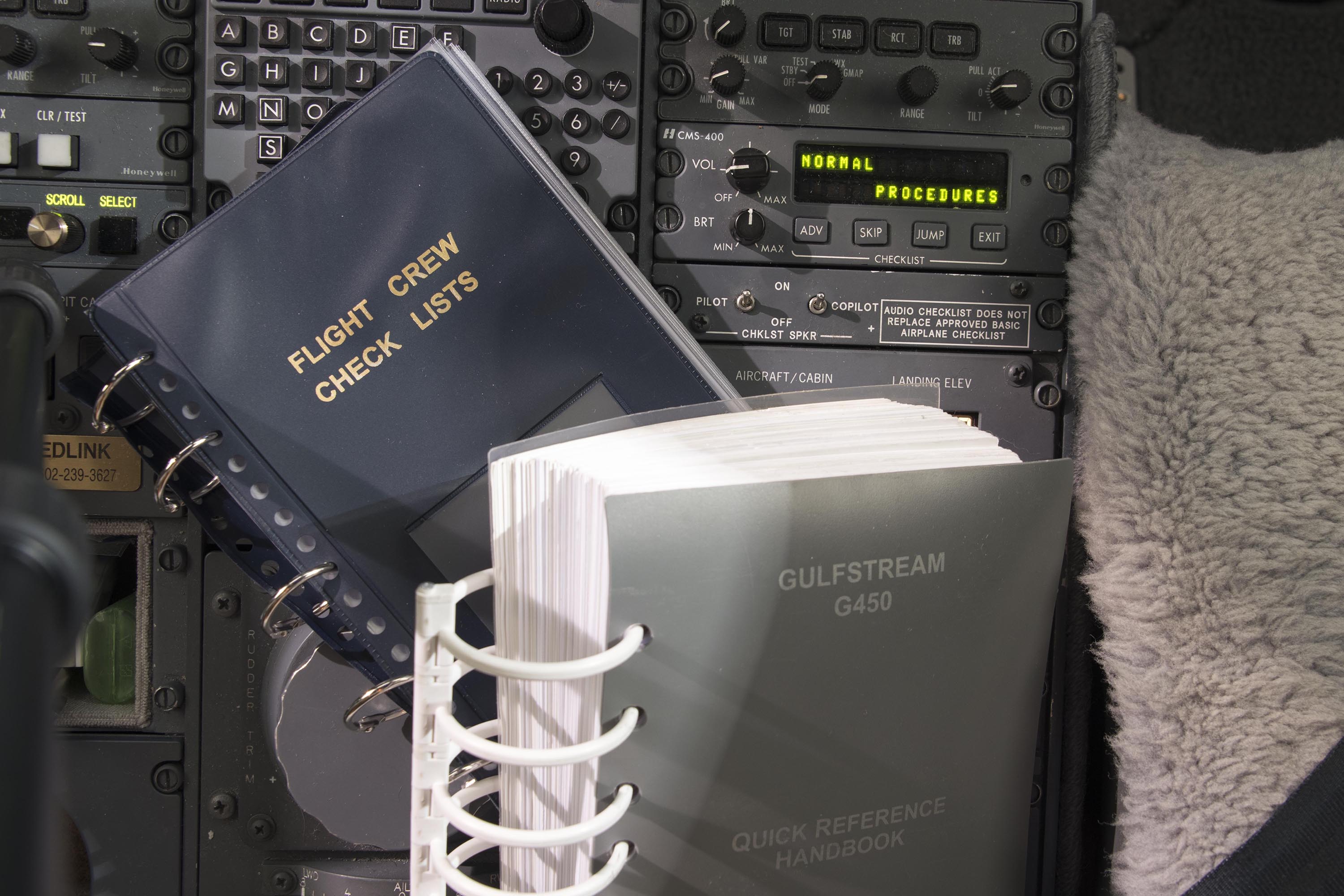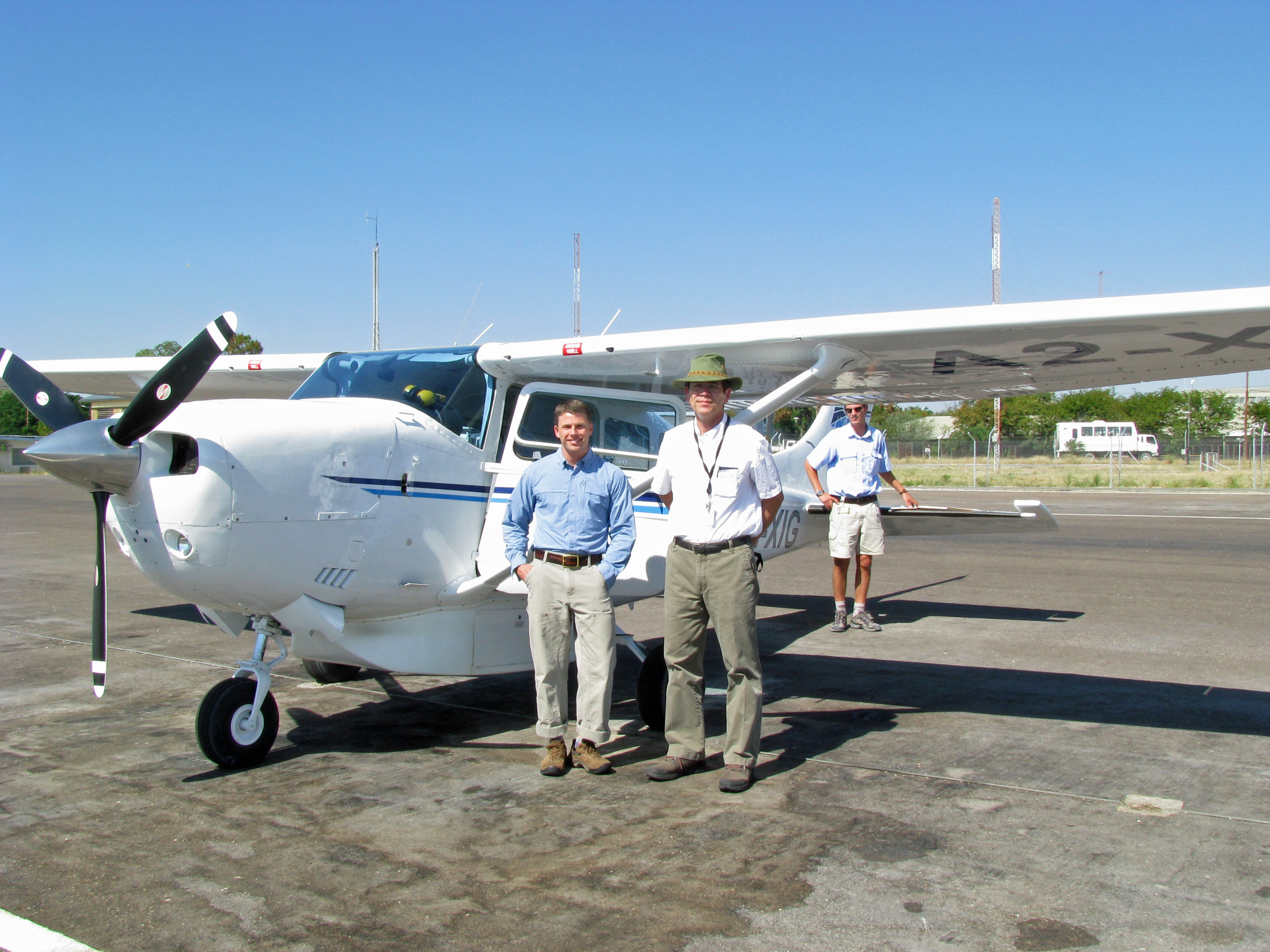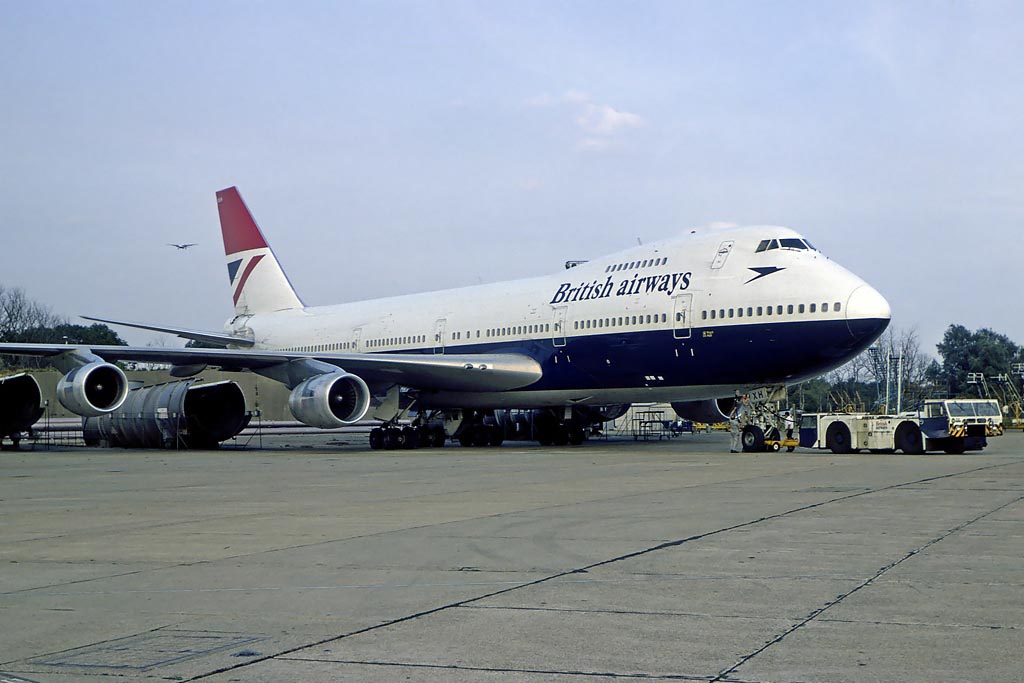While I don’t think it possible for us to read minds, I do believe we can develop skills to accurately anticipate what needs to happen in a cockpit so crew coordination between pilots becomes more effective. We can reduce cockpit error even as we reduce the need for long verbal exchanges. There are times accidents can be avoided if one pilot simply asks the other, “Did you really mean for me to . . . ?” But eliminating the need for further explanations can make things safer still. The best way to reduce confusion in a cockpit is to ensure everyone works from the same procedures. We all need to be on “the same sheet of music.”
— James Albright

Updated:
2017-09-15
On June 24, 1982, the crew of British Airways Flight 9, call sign “Speedbird 9,” lost all four engines of their Boeing 747 on a night flight from Kuala Lumpur International Airport (WMKK), Malaysia to Perth Airport (YPPH), Australia.
Miraculously, the stricken airliner was able to limp to Jakarta and safely landed. In the days that followed, the aviation world began to understand the dangers of volcanic ash, its effect on turbofan engines, and how to survive an encounter. In the years to come, a sophisticated worldwide network of volcanic activity detection helped ensure such encounters never occur again. But none of that existed on the day Speedbird 9 flew through the ash of the recently erupting Mount Galunggung in Indonesia. The crew was flying into unknown territory. How were they able to cope so well?
When we are paired with the same cockpit crew for weeks, months, and years in succession, we learn to anticipate the “flow” of information between pilots and how to make things happen almost automatically. The crew of Speedbird 9, however, was not a crew that had been matched for a long time; they were of a typical airline bid schedule. And yet their crew coordination was exemplary. The captain’s conduct during an extreme emergency was nearly flawless and his crew’s performance under stress helped bring the crippled aircraft to a safe landing. It was as if the rest of the crew had learned to read the captain’s mind before any verbal orders were needed. On the surface, this would seem to be an ideal situation. But if the mind reading exercise results in a poor guess or if anyone is lulled into complacency, things can go horribly wrong.
Most of what follows are my techniques.
I do include a narrative description of what happened to British Airways Flight 9, below.
For more about that flight, see: British Airways Flight 9.

1
Be predictable
Crews can be lured into complacency from a kind of mind reading that comes from repetition. If a small group of pilots fly exclusively together without an occasional break from outsiders, they can be tempted into dangerous shortcuts or even intentional noncompliance. The cure is to rigidly adhere to all Standard Operating Procedures (SOPs). When every crewmember sticks to SOPs, cockpit procedures become more predictable.
Cockpit SOP usually means a checklist provided by the manufacturer, but the checklist may not be tailored to specific aircraft outfitting or could be out of date with current requirements. Changes to the checklist should be coordinated with other users, any management companies, and the operator and regulating authorities when flying commercially. Crews should be discouraged from “ad hoc” adjustments that may not have considered every possible situation. Once a checklist is agreed upon, it should be used by every pilot without exception.
A good cockpit SOP begins with a good checklist; but a good checklist isn’t enough. Familiar crews may opt to divvy tasks on a “first come first served” basis. “Whoever gets to it first will get it done,” may be thought of as an efficiency measure. It can be more efficient, but required items can be forgotten when both pilots assume the task was completed by the other. A good cockpit SOP should include a clear division of duties. When about to fly an oceanic trip, for example, it may be helpful to specify which pilot programs the Flight Management System (FMS) and which checks the results against the master document. Best practices dictate these tasks need to be divided and specified to avoid a last-minute need for one pilot to do both.
Once every pilot adopts the same checklist and adheres to the agreed upon SOPs, the flow of cockpit tasks becomes predictable. The rhythm of crew coordination takes on a pattern that makes it easy for one pilot to anticipate what happens next, and what the other pilot is doing. The captain, for example, realizes the first officer may want to listen to weather broadcasts prior to setting up the FMS for the arrival and approach. He or she can pace the checklists to accommodate the first officer’s duties. The first officer can also anticipate the progression from each flap setting and the landing gear based on the SOP and not what any particular captain prefers. Each pilot’s actions become predictable. Of course, not every situation is covered by an SOP or checklist; for these clear and concise communications are mandatory.
2
Telegraph intent
Even the best SOP can be derailed by an aircraft malfunction, an interruption from the cabin, a last-minute instruction from air traffic control, or any number of other unforeseen circumstances. Your best efforts at making cockpit life predictable can be upset by the unpredictable nature of flying. For these situations, crewmembers should learn to make each communication in the cockpit clear, concise, and unambiguous. We don’t often parse our communications with the primary thought of how our words or actions will be received. But that is precisely what we need to do.
A 1986 National Aeronautics and Space Administration (NASA) study put three Boeing 727 crews into a situation where cockpit communications was key to a successful landing following a fuel leak. The crews were faced with a leak from their right-wing tank that threatened to upset the aircraft’s lateral balance. They had enough fuel to reach the diversion field, even if all the fuel in the right-wing tank was lost. But losing all of the fuel could leave the airplane uncontrollable.
In every case, the captain directed all three engines be fed from fuel in the left-wing tank. This would provide for the smallest fuel imbalance for landing. But in each instance, the flight engineer decided it was better to take fuel from the right wing, hoping to use as much of the fuel as possible. Each captain was alarmed when the fuel imbalance accelerated and had to explicitly order the flight engineer to reconfigure the fuel panel. The maximum permissible fuel imbalance of 1,000 lbs. was exceeded in two of the three trials, the worst being a 5,000 lb. imbalance.
Note: for more about this NASA study, see Klein, Gary, Sources of Power, pp. 218-219.
Of course, it seems obvious that each captain should have preceded their original orders with a short explanation. “Feed each engine from the left-wing” may have seemed obvious to the pilots in the front seats with control yokes tilting right because of a heavy left wing, but not so much to the flight engineer. “We are going to have a heavy left wing for landing,” would have been a clear, concise, and unambiguous way to eliminate the confusion before it endangered the aircraft.
Not every scenario is so dire; we can use these techniques for more mundane situations. For example, letting the captain know it is time to configure may simply be a matter of resting a hand on the flap handle. Sometimes a manufacturer’s recommendation doesn’t stand the test of time and a captain’s “local knowledge” can be the preferred technique. Many years ago, an aircraft I flew was prone to flap failures when the first notch of flaps was extended right at the limiting speed. The manufacturer was aware of the problem but hadn’t come up with a solution. Some of our captains issued terse commands, “don’t extend the flaps until 240 knots.” That created confusion amongst our younger pilots, since the limiting speed was 250 knots. A simple, “we’ve noticed extending the flaps at 250 sometimes causes them to stall, so we try to wait until 240,” just takes an extra second but puts both pilots on the same page. An old, experienced captain may not feel the need to explain him or herself to the new kid in the right seat, but doing so improves crew coordination, mentors the youngster, and can prevent confusion that can turn a small incident into an accident. Conversely, a young, inexperienced first officer may feel too intimidated to speak up. Both issues can be solved with a little humility.
3
Critique humbly, encourage empathy
Humility may seem an odd topic for an article about safe and efficient cockpit operations, but it is a necessary element of honest and productive critique. Furthermore, encouraging humble critique is a good way to prevent complacency.
Many captains favor an easy-going persona that is designed to put the crew at ease, but their actions can undo any intended good will. “I have an open-door policy” or “I am just a crew dog, just like you” may be a part of the captain’s introduction, but his first actions can convert the message to just meaningless words. The best way for a captain to ensure the crew is willing to speak up when needed is to demonstrate his or her openness to critique. The captain should make note of any mistakes during the flight, especially his or her own. “I forgot to select an autopilot vertical mode for the descent,” the critique can begin. “I’ll try to do better next time, but please remind me if I forget again.” If the captain is so open to self-critique, critique from the rest of the crew should be cheerfully received.
Another benefit of open self-critique and a frank discussion of each flight’s mistakes is that everyone is reminded of the value of good SOPs. We can fool ourselves into thinking we have the job mastered. An honest critique can serve to shake this thought and stem the tide of complacency.
A crew that follows SOPs and communicates well during routine situations should be well on its way for when things don’t go routinely. But the need to communicate effectively can be forgotten when the stress level ratchets up. Finding case studies of how everything worked as it should have can be a challenge, since accident reports are rarely written for happy endings. But they do exist, and few have had more of an impact on making the skies safer for future generations than that of British Airways Flight 9.
4
Case study: Speedbird 9
Finding details about this flight isn't as easy as looking for an accident report because, technically, there was no accident. But an excellent narrative is given by Stanley Stewart, Emergency: Crisis on the Flight Deck, pp. 177-203.
It was a routine trip for Captain Eric Moody and his crew of sixteen. They had flown from London, England to Jakarta, Indonesia, and then repositioned as passengers to Kuala Lumpur, Indonesia. After five days together, they had melded into what one passenger called a “happy band.” The flight from Kuala Lumpur to Perth promised to be a dull one, with no significant weather reported for the five-hour night flight.
After level off, with the autopilot engaged, the three-pilot cockpit crew computed the aircraft’s buffet speed for their 37,000-foot cruise altitude and their three-engine drift down speed in the event of an engine failure. With a light passenger load and smooth air, meals were served immediately. About an hour after takeoff, the cabin lights were dimmed and many on the aircraft attempted to sleep. In other words, it was all very routine.
After 90-minutes in flight, Captain Moody double-checked his radar to confirm no threats lay ahead and got up to stretch his legs and check on the cabin. A few minutes after the captain’s departure, Senior First Officer (SFO) Roger Greaves noticed wisps of clouds at their altitude, even though the radar was clear. A quick flick of the landing light confirmed either thin cirrus or the tops of isolated weak cumulus. He activated the engine ignition and anti-icing systems as a precaution. He and Senior Engineer Officer (SEO) Barry Townley-Freeman then noticed streaks of small electrical “forks” streaking across the windscreen. Both recognized the phenomenon as St. Elmo’s fire, something more commonly associated with thunderstorms. But their radar showed no activity and the air was smooth. They both had their lap belts on but decided to fasten their shoulder harnesses as well. SFO Greaves switched on the fasten seat belt sign. After a few minutes they smelled a strange ionized odor from the air conditioning system and a blue mist seemed to surround the cockpit. Greaves asked the cabin crew to summon the captain back to the flight deck.
Captain Moody returned immediately, having noticed the electrical odor. A quick scan of the engine instruments reassured him that his four powerplants were okay. But the odor was now carried forward by smoke from the air conditioning system. SEO Townley-Freeman noticed a flicker of a bleed valve on the number four engine begin to close, only seconds before calling out, “Engine failure number four.”
Captain Moody called for the engine fire checklist and just as that was completed the others started to fail too. “Engine failure number two . . .” “Three’s gone.” “They’ve all gone!” He had practiced the all-engine failure scenario before, but this was different. His instrumentation was still working, and the autopilot remained engaged. SEO Townley-Freeman suggested they run the shutdown checklist for the remaining engines. Captain Moody directed the crew to do just that and to put out a Mayday. He took advantage of the autopilot to initiate a descent to maintain speed while he considered his options. The engine instruments indicated some of the engines had exceeded turbine gas temperature limits; in fact they had pulled the fire handle on the number four engine.
During their descent the crew attempted to relight engines 1, 2, and 3. But Captain Moody decided, with the agreement of the cockpit crew, to attempt to relight engine 4 as well. As they descended through 26,000 feet the cabin altitude climbed above 10,000 feet and the cabin pressure warning horn sounded. The crew started to don their oxygen masks but SFO Greaves’ mask fell apart in his hand. Captain Moody elected to start an emergency descent to keep the cabin pressure under control but to leave the landing gear retracted in case a ditching would be required. To compound things even more, the two primary airspeed indicators differed by 50 knots.
Once the cabin altitude reached 14,000 feet and the passenger oxygen masks deployed, Captain Moody decided it was time to have a word with his passengers. "Good evening ladies and gentlemen. This is your Captain speaking. We have a small problem. All four engines have stopped. We are all doing our damnedest to get them going again. I trust you are not in too much distress."
While the crew repeatedly ran through the engine start checklists, Captain Moody began to formulate a plan. He steered toward Jakarta but decided that with a safety height of 10,500 feet, he would have to turn back to sea prior to reaching 12,000 feet. Ditching a Boeing 747 at night would be their only option, albeit not a good option. With a few thousand feet to spare, the number 4 engine came back to life. The other three started about 90 seconds later, just as they reached 12,000 feet. They then climbed to 15,000 feet where the St. Elmo’s fire resumed and the number 2 engine surged. The crew agreed to shut that engine down, descend from the strange atmosphere and leave the throttles in their present positions. Captain Moody then controlled airspeed with drag.
The localizer portion of the Instrument Landing System (ILS) at Jakarta was good but the glide slope was inoperative. As they lined up on the runway everything disappeared straight ahead. The crew realized their front windows were almost opaque. Captain Moody used the localizer and leaned left to peer out of a narrow 3-inch band of window where he could make out some of the runway ahead. SFO Greaves called out distance measuring equipment range with a recommended profile of 300 feet per nautical mile, as well as their radio altimeter height. SEO Townley-Freeman called the speed and engine thrust settings. Pilots prefer to look far down the runway to judge height on landing but Captain Moody could only see the hazy outline of the left-hand runway lights. He eased back gently on the control column and the wheels kissed the ground.
The next day they learned that Mount Galunggung on the south Java coast had erupted, spewing giant plumes of ash eight miles into the air. The plume had blown across Speedbird 9’s path and sandblasted its leading edges and windscreens. The engine compressors were caked in volcanic ash, causing the four-engine flameout.
We now know, thanks to this episode, that volcanic ash melts at temperatures lower than found in modern turbine engines. The ash melts in the hot section of the engine and fuses on the high-pressure nozzle guide vanes and turbine blades. This drastically reduces the engine’s “throat area” and causes the engine to surge and eventually flame out. Once the engine cools down, some of the solidified ash becomes brittle and breaks off, allowing the engine to be restarted. But none of this knowledge existed on June 24, 1982. And yet the crew of Speedbird 9 was able to meld into a single mind, working together closely to diagnose the problem and execute a flawless solution.
Side bar:
Pilots who regularly fly the volcanic regions of the world these days know the first rule of flight in volcanic ash: don’t. The Smithsonian / USGS Weekly Volcanic Activity Report available at http://volcano.si.edu/reports_weekly.cfm offers a good first stop for learning how to avoid such an encounter. ICAO Doc 9861 recommends the following procedures if you encounter a volcanic ash cloud:
- Immediately reduce thrust to idle, to reduce engine temperatures.
- Disengage auto throttles, to prevent engine thrust increases.
- Exit the cloud as quickly as possible, probably with a descending 180-degree turn.
- Turn engine and wing anti-ice on, as well as all air conditioning packs, to improve engine bleed air flow.
- Start the APU, if available, to provide backup electrical power.
- Put on oxygen at 100 percent.
5
The secrets to "mind reading" for better CRM
In the case of Speedbird 9, the time from the initial power loss to landing was only 25 minutes. Thirteen of those minutes were without any engine thrust. But those minutes included several distinct challenges that could have become crises had the crew allowed that to happen: the loss of all four engines, the prospect of having to ditch at night on choppy seas, having to land quite literally “in the blind.” They dealt with the engine losses, planned appropriately for the possibility of ditching, and successfully landed. With all three challenges, the crew displayed superb crew coordination. The foundation of their success was set into motion by the training they received with British Airways.
The crew’s strong adherence to Standard Operating Procedures left no doubt in the captain’s mind that the Senior First Officer and Senior Engineer Officer had taken the correct steps during the first moments of the volcanic ash encounter. The crew was able to have a similar confidence in their captain’s decisions.
The captain had to operate outside known procedures during their powerless descent and made decisions that could have been contrary to his crew’s expectations. By discussing the options, the captain gained the crew’s support to attempt a relight of an engine previously shutdown for a suspect fire. The decision didn’t cause any misunderstanding or misgivings. He telegraphed his intent for this and several decisions, eliminating any time-consuming debates which could have delayed the decisions until too late.
Captain Moody credited an element of luck in his performance that day. “If the base of the ash cloud had dropped to the sea, so would we.” But his skill, coolness, and persistence saved the aircraft and everyone on board. He was awarded the Queen’s Commendation for Valuable Service in The Air.
We should take a page from Captain Moody’s playbook and realize that we can set the groundwork for better cockpit communication by insisting on a strong reliance on standard operating procedures, by telegraphing our intent as well as our orders, and by maintaining a humble attitude when inviting critique. These steps will improve crew efficiency and cockpit safety; it will be as if we are reading each other’s minds.
References
(Source material)
Klein, Sources of Power: How People Make Decisions, The MIT Press, Cambridge, Massachusetts, 1999.
Stewart, Stanley, Emergency: Crisis on the Flight Deck, 2013, Airlife Publishing, Ramsbury, Marlborough, England




